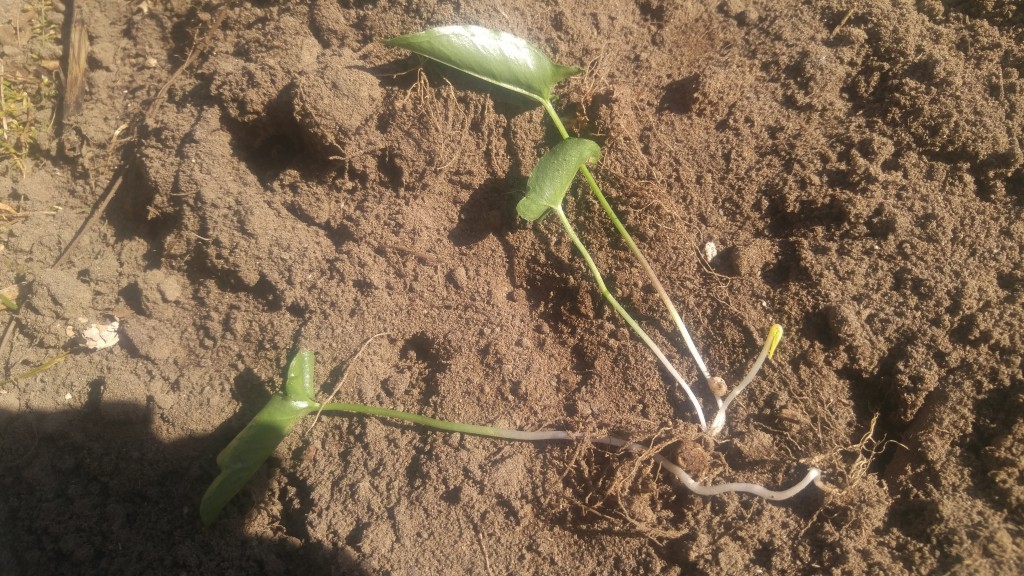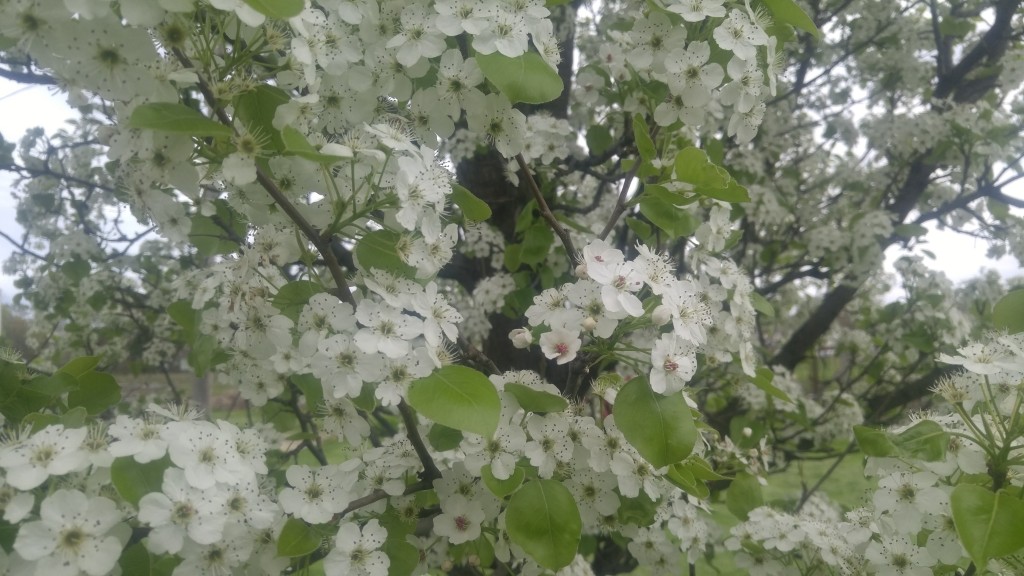It’s surprisingly easy to introduce an invasive plant into your garden. It often happens when gardeners share plants with one another.
We have a few examples of that happening in our garden. One of those is Pinellia tripartita a plant native to China and Japan. I’ve heard it called Japanese jack-in-the-pulpit, although there’s another plant goes by the same name. Crow dipper is another name. One website refers to it as green dragon, another calls it voodoo lily. Botanically speaking, it’s closely related to our native jack-in-the-pulpit.
Pinellia is a smallish plant only eight to twelve inches tall and can grow in a variety of environments as long as the soil is well-drained. In our garden it is growing as a weed in full sun. Actually, it is growing in the shade of taller sun-loving plants, it is flourishing under the peonies that we brought in from another garden.
It was present as a persistent weed in that original garden too. We thought we were very careful to remove any trace of the Pinellia when we dug the peonies – apparently that was not the case. Now six years later we are still fighting it.
Unlike the other weeds we’ve accidentally brought in, these we have been able to keep confined to one relatively small spot in our garden.
Pinellia is very well adapted for reproducing itself and is quite competitive growing among other plants. It produces both tubers and numerous seeds, making it doubly sure it will reproduce one way or another.
This past week we re-dug the peonies along with the infested soil they were growing in. The peonies we saved and replanted; the soil we bagged up and set it out for disposal in the landfill. Home composting will not destroy all of the seeds or tubers.
In some parts of the country people are planting it as an ornamental, it really is an unusual looking plant. Either it behaves itself in certain climates or it hasn’t become a big enough problem in those areas. People on gardening chat sites marvel how well it spreads without any effort on their part. In some states it is officially classified as a noxious weed.
Even though you can find reputable plant sources online extolling its virtues, I highly recommend against planting it. People say, “I’m a conscientious gardener and would never let it get out of control”. That may be the case but what happens if you move and sell your house, would the new owners be as vigilant?
There is a purple cultivar of Pinellia tripartita that is supposed to be non-invasive, I would never take a chance on that one either.
Bob

